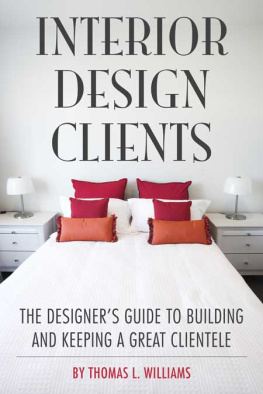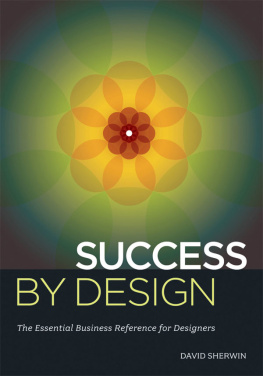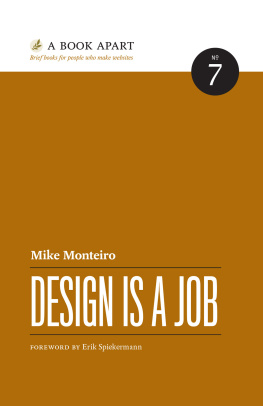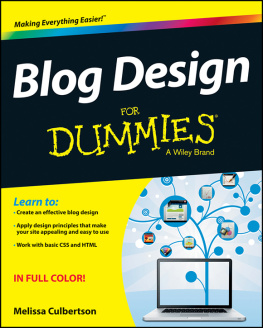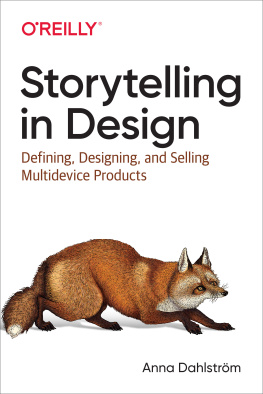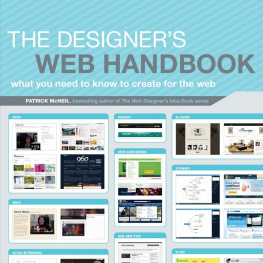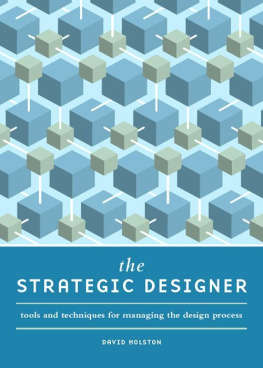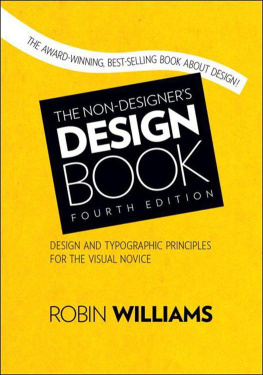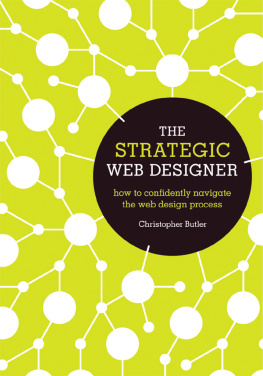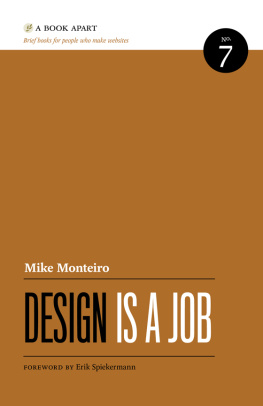MORE FROM THE A BOOK APART LIBRARY
HTML5 for Web Designers
Jeremy Keith
CSS3 for Web Designers
Dan Cederholm
The Elements of Content Strategy
Erin Kissane
Responsive Web Design
Ethan Marcotte
Designing for Emotion
Aarron Walter
Mobile First
Luke Wroblewski
Design Is a Job
Mike Monteiro
Content Strategy for Mobile
Karen McGrane
Just Enough Research
Erika Hall
Sass for Web Designers
Dan Cederholm
On Web Typography
Jason Santa Maria
Responsible Responsive Design
Scott Jehl
Copyright 2014 Mike Monteiro
All rights reserved
Publisher: Jeffrey Zeldman
Designer: Jason Santa Maria
Managing Director: Katel LeD
Editor: Tina Lee
Copyeditor: Nicole Fenton
Proofreader: Nadxi Nieto
Compositor: Rob Weychert
Editorial Assistant: Sally Kerrigan
Ebook Producer: India Amos
ISBN 978-1-937557-15-7
A Book Apart
New York, New York
http://abookapart.com
10 9 8 7 6 5 4 3 2 1
TABLE OF CONTENTS
CHAPTER 1
Why You Need Design
CHAPTER 2
Hiring a Designer
CHAPTER 3
Working Together
CHAPTER 4
Evaluating Work and Giving Feedback
CHAPTER 5
When Things Go Well
CHAPTER 6
When Things Go Wrong
FOREWORD
AS MUCH AS YOU think you know a man, I suspect youd know a great deal more if you could meet his mother. Mike is the son of a seamstress. Judite Monteiros specialty is wedding dresses, and young Mike watched firsthand as she worked with brides to get the right pattern, the right fabric, the right fit. As a kid, I was getting a master lesson in client services, he writes. A lesson on how towork with a client instead of for a client. Later on, Mike discovered that the way a seamstress approaches her craft isnt too far off from a designer.
Here we get to the point: design disasters usually spring from the faulty notion that design is art not craft. Mikes first book, Design Is A Job, gave designers a swift kick in the pants, admonishing them to wake up, ditch their artsy-fartsy egos, and take responsibility for their work. In this new book, Mike demystifies design for non-designers, showing them that good design isnt the product of creatives pulling rabbits from a magical hat but a rigorous process of problem solving, performed by professionals.
If you are a designer, buy this book and give it to your clientsbut also to the designers you know to remind them of the good work youre all trying to do.
If you are a client, feel confident that whoever handed you this book cares about making your collaboration work. Read it, learn from it, and buy a copy for your colleagues so they can learn from it too.
For client services to succeed, both the craftsperson and the client must take responsibility for their roles. This book will help you play your part in getting the work done, whether youre the seamstress or the bride.
Austin Kleon
Dedicated to Leslie Harpold, who taught me how to write
a thank you note.
INTRODUCTION
I DONT KNOW anything about design.
Bullshit.
Look around you. You make choices based on design every day. The chair youre probably enjoying now is designed to make you feel comfortable. The clothes you choose to wear are designed to make you feel confident or relaxed (or both), depending on the day of the week. The car you drive is designed to make you feel safe, unless its designed to make you feel young. But you know the difference.
Even if you cant design those things yourself, that doesnt take away from your ability to decide that was the chair you wanted to sit on, or the shoes you wanted to wear, or the car you wanted to buy.
You make design decisions every day.
Youve designed things to achieve your goals since you were a kid, from diagramming a sandlot football play in the dirt to sussing out how to play your parents against each other to land a trip to Disneyland. Youre very capable of stating your goal and knowing whether youve achieved it. And when you achieve your goal, you say your plan has gone as designed.
Thats it: design is the plan that gets us to our goal.
You know a lot more about design than you give yourself credit for.
You know bad design when you encounter it. From every chair youve sat in that hurt your ass, to every coffee cup that burned your hand, to every time your finger triggered the wrong link on your phone, to every airline booking site that pissed you off. You know bad design. You hate it. And you should. Because anything designed poorly couldve been designed better. The truth is that good design isnt magic: it takes a clear goal, the expertise and resources to reach that goal, and, most of all, the intention to do it well.
As smart as you are about design (and you are! Go read from the beginning if you dont yet believe it), sometimes the goals youre trying to achieve need the services of someone who designs solutions for a living. People trained to solve problems. The difference between being design savvy, which many people areincluding yourselfand having design skills is experience honed over time. We may all appreciate a nice pair of shoes, but few of us can actually make them.
As with any profession, you have good designers, bad designers, and designers that arent right for you. DesignersIm one of themcan be difficult to work with. It can be intimidating to search for design services without a playbook.
Congratulations. Youre holding the playbook for hiring design services!
Ive been in the design business a long time. I run an interactive design shop called Mule Design in San Francisco, and I hear this phrase from my clients almost every day: I dont know anything about design. I love my clients. They help me keep the lights on. Theyre good people, and they all have one thing in common: they showed up with a goal in mind. My job is to add my design expertise to their business expertise and design a solution that accomplishes their goal. I love doing it. I want to help you love it too.
No one is born knowing how to be a good client. (I certainly wasnt born a good designer.) Successful design projects need equal participation from the client and the designer. Yet the design process remains a mystery to the people who buy it. Design isnt sausage. Youll enjoy it even more if you understand how its made. This book will attempt to demystify that process and help you prepare for your role. Well-informed clients make projects run more smoothly and effectively, and well-run projects ultimately cost less. This book will help you ask the right questions, get the right answers, and work with the right people. Youll have the confidence to hire people who challenge you to make your product the best it can be.
When you hire a designer, youre not hiring a pair of hands. Youre hiring a mind thats been trained to solve problems in a way you cant.
Design isnt magic and it isnt art. Its a craft. Design solves a problem within a set of given constraints. Well talk about why those constraints matter. Much as a doctor needs patients to practice their craft, a designer needs clients to practice theirs. Like walking into a doctors office, describing whats wrong, and then having your doctor diagnose the problem and prescribe a solution, working with a designer is the same. You tell us whats wrong, and we research, come up with a plan, and design a solution. We dont ask for blind trust, but we do ask that you respect that weve been trained in handling a scalpel. And maybe a


